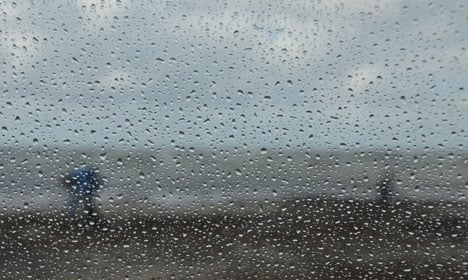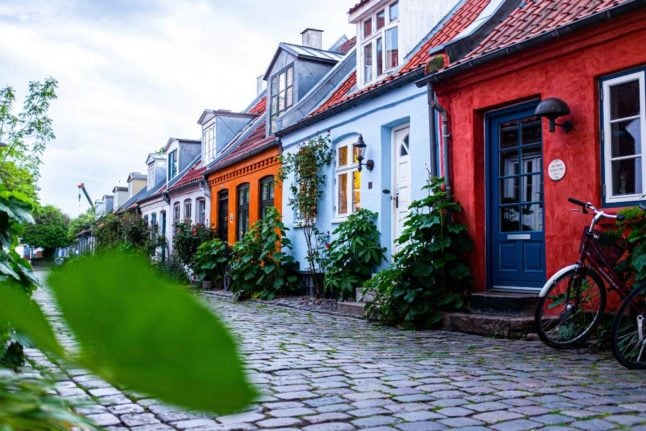OPINION AND ANALYSIS
‘Denmark is no longer the country I loved’
If you complain, you will promptly be told that Denmark is the world’s happiest and best country. Despite its record for prescription pills and suicide.
Published: 12 January 2016 16:03 CET

The weather we have to accept but what about the current dreary state of affairs in Denmark? Photo: Colourbox
Competent immigrants are expelled while violent men like Gimi Levacovic get millions from the state.
The elderly lie around in diapers in nursing homes because we can’t afford the needed staffing. But we have the money to spend billions each year to subsidize the media.
There is a mass migration from south to north that we are powerless to do anything about. There is massive pressure – but no help – for the weakest people in areas most affected by the refugee crisis.
The left-wing is mad about the prospect of families in rural areas maybe being able to afford a car large enough for the whole family.
Growth in Denmark is dead as a doornail. We do everything in our power to destroy our own competitiveness yet still act amazed when we succeed.
Some 100,000 eastern Europeans take care of tasks that the Danes can’t be bothered to do. At the same time, there are 800,000 Danes of working age between 18 and 65 that are dependent on public benefits.
There are 800,000 employees in the public sector. The same number of people live off of the system. There are 1.2 million retirees. But there are only 1.6 million people in the private sector to pay for it all.
Public job activation programmes cost somewhere between 15 and 30 billion kroner a year, but create no jobs.
Doctors and nurses use up to half of their time recording and reporting information – that hardly gets used. In return, there are waiting lists for treatment and patients sleeping in the hallways.
The City of Copenhagen has a communications staff of several hundred, while there are waiting lists for daycare institutions and a shortage of teachers.
The border with Sweden is closed and we are paying for the border controls. The border with Germany must also be checked, and we pay for that too. That heralded Danish business acumen is in full swing.
We have just passed the most expensive budget of all time. It will be paid by the world’s highest tax burden. Still, we have to borrow 60 billion kroner from abroad and take from retirees’ pension in order to get the budget to work.
If one complains, you will be immediately told that Denmark is the world’s happiest and best country. Even though 12 percent of the adult population pops prescription pills and the suicide rate is among the world’s highest.
A nearly unanimous parliament adopts an “energy reform” that costs residents an additional eight billion kroner in taxes each year. It doesn’t create any real CO2 reduction, but all those windmills sure do look nice.
The labour union 3F protects something or somebody (it’s a little unclear what or whom) by blockading businesses and restaurants with the result that jobs disappear abroad. Many praise their exemplary effort.
Parliament approves a “freedom from information law” so residents can no longer have full insight into the political process. Agencies and ministries use the law to cover up their mistakes and blunders.
Tax agency Skat wastes four billion kroner on an electronic collection system which is incredibly poorly-planned and purchased. A smart business man scams them for nine billion kroner with a bunch of photocopies. No one is held accountable and in the meantime, the agency goes after the self-employed and small businesses.
Rail company DSB wastes countless millions on the IC4 train, the Rejsekort, operating in Sweden and more. Despite the massive government subsidies, it is more expensive to take the train than to fly. And the trains don’t even run on time.
One man is fined for cleaning his gutter. Another because the rocks around his campfire aren’t facing the right direction. A third is made to tear down his shed because it is one square metre too big.
Skat and the Danish Security and Intelligence Service (PET) admit at approximately the same time that they have illegally exchanged sensitive information for more than ten years. The justice minister refuses to do anything about it and uses the “freedom from information law” to sweep the whole mess under the rug.
Property taxes have exploded. Skat admits that upwards of 85 percent of its property evaluations are illegally high and thus has charged way too much in tax. But it refuses to pay the money back. Parliament approves a special law so that property owners can neither complain nor take Skat to court for compensation.
The Roskilde Festival succeeded in expropriating a local farmer’s land because festival-goers need it to camp. The man is given a compensation amounting to roughly one fourth of the land’s market value.
Ekstra Bladet can tell us that Prince Henrik’s car was parked outside of a swinger’s club while he was at the movies, yet the Danish press waited five days to bring the story of the systematic rapes and assaults in Cologne.
Police tell the media that they no longer bother investigating break-ins in which less than 10,000 kroner is stolen. That Denmark is the at the very top of the EU when it comes to burglaries doesn’t seem to worry them.
Speeding cameras are systematically placed where they will give the best pay-out to the public purse instead of where they would best strengthen road safety.
For nearly the tenth year running, Copenhagen is under construction and dug up from end to end.
Violence and social control are a part of daily life in many immigrant communities. We talk about it. But we don’t do anything.
Police say that they cannot respond to all reports but at the same time if you take matters into your own hands, then you will go to prison.
Immigrant boys beat a young couple beyond recognition with bicycle chains. Their punishment of two months in jail was finished before the couple had healed and there was no compensation.
A foreigner throws his girlfriend from a balcony and gets a job on TV with celebrity chef Claus Meyer. The girlfriend survives but is disfigured and has severe psychological trauma. She gets no help.
And I could continue to go on and on and on.
Why can’t we help each other to get things to work?
I grieve. Denmark is no longer the country I loved when I was a young man.
Søren Kenner is an entrepreneur and a contributor to Folkets Avis, where this was originally published. It has been translated and republished with the author's permission. You can follow the author on Twitter at @sorenkenner.
Url copied to clipboard!


 Please whitelist us to continue reading.
Please whitelist us to continue reading.
Member comments